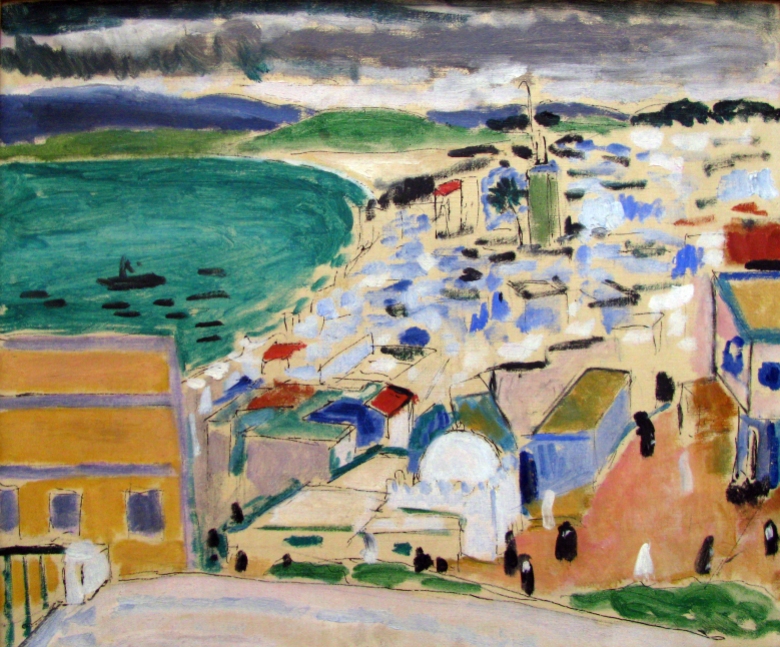
PAGE UNDER CONSTRUCTION
Henri Matisse, Eugène Delacroix, Jean Genet, Paul Morand, Joseph Kessel, Truman Capote, Jane and Paul Bowles, Samuel Beckett, Tennessee Williams, Jack Kerouac, Yves Saint-Laurent, the Rolling Stones: dozens of artists settled in Tangier, as the Moroccan city seduced and fascinated them, inspiring or transforming their work.
The myth of Tangier is this Arab city, interloped and cosmopolitan, in its history of fusion with artists who have transfigured it.
First came the shock. The dazzling view from the terraces of the Kasbah. A panorama flooded with the singular clarity that captivated Matisse. A landscape of anarchic buildings, fluttering cloths, boisterous children's games and the desperate call of the muezzin. Further down, the hustle and bustle of the crowds, the rustle of smells.
Then our gaze turns to the sea, glimpsing the land of Spain in the distance, knowing that Mare nostrum is engaged with the ocean. Then the senses are soothed, meditated and tranquilized.
Contemplation too. The kind of contemplation shared by men and women as they sit along the paths overlooking the sea, or as they take a seat at the renowned Café Hafa. Their thoughts seem transfixed by the ballet of ships and the other continent, perhaps dreaming of reaching it.
Later, a fascination is born. For the " Dream City " where Paul Bowles lived and died while he was just passing through.
The bewitching Tangier distills this into the maze of the Petit Socco, with its beguiling smiles and living ghosts lurking in the shadows. There's an unshakeable attachment to this sultry, unsettling city, full of memories and traces of vanished splendor.
Jean Genet described it in Le journal du voleur as " a sort of gambling den where players haggle over the secret plans of all the armies in the world ".
BEAUTY ABOUNDS
This is Tangier when you get down to it. Buzzing and peaceful, tantalizing, mysterious as a courtesan, continually between two shores.
This cosmopolitan Moroccan city, at the tip of the Strait, was able to hold on to passing artists and force them to stay and create in this whirlpool of near and far.
Eugène Delacroix spent three months there in 1832. The trip left an indelible mark on his painting and his appreciation of the place. " The living sublime runs through the streets here ", he wrote in his notebooks.
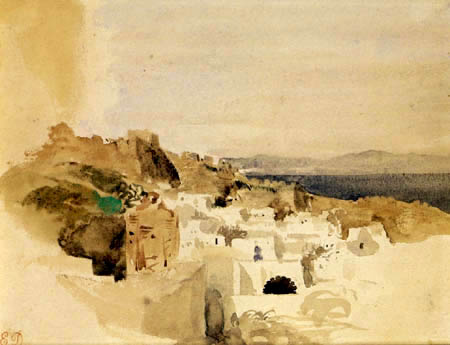
Among others, he was succeeded in 1912 by Henry Matisse, who, in the jubilation of his aesthetic and technical discoveries, described: " A place all for painters, where beauty abounds. Joy is in the sky, in the trees, in the flowers ".
Both produced abundant work: 23 canvases and over 60 drawings for Matisse.
Many other illustrious painters came here, enthralled by the light, shimmering colors, meditation and mystery of Tangier.
"Right now I'm like a man who dreams and sees things he's afraid will escape him."
EUGENE DELACROIX, TANGER, 1832
THE MYTH IS WRITTEN
Fifteen years after Delacroix, Alexandre Dumas arrived. In Le Véloce, he recounted a hunt in the countryside and the splendor of a Jewish wedding in the kasbah, just as the painter did in his diary. Mark Twain, in 1867, was equally captivated by the Cherifian city. In Le voyage des innocents, he wrote: " Tangier is a foreign city if ever there was one, and its true soul can be found in no other book than The Thousand and One Nights. "
" I saw behind a dune the tip of a long rifle, then the hood of a burnous, then a tanned head, then the whole body of a bare-legged Arab (...). (...) I had only ever seen Arabs in paintings by Delacroix or Vernet, or in drawings by Raffet or Decamps. This living representation of the African people, who had gradually risen up before me, and who, stopping at my appearance, stood thirty paces away from me, motionless, rifle on shoulder and leg forward, like the statue of Calm, or rather of Circumspection, made a deep impression on me. "
ALEXANDRE DUMAS,LE VÉLOCE, TANGER, 1846

Pierre Loti, accompanying an embassy in 1889, described it as follows: "It's still a little strange, though, and much more Muslim in appearance than our Algerian towns, with their snow-white walls, high crenellated casbah and minarets clad in old earthenware. It's even curious how much more striking the impression of arrival here is than in any of the other African ports on the Mediterranean. " He also noted, as if foretelling the city's destiny: " A great many tourists come here every winter. The Sultan of Morocco has taken it upon himself to make it half-abandoned to foreign visitors, to turn his eyes away from it as from an unfaithful city."
" Here, there is something like a white shroud that falls, extinguishing the sounds of elsewhere, stopping all the modern agitations of life."
PIERRE LOTI, TANGER, 1889

THE METAMORPHOSIS
Meanwhile, Tangier was changing.
Occupied by the Spanish, Portuguese and English until the 17th century, it became a duty-free international zone in 1923. In 1925, a treaty between the great powers made it the first and only city to be administered by a consortium of nations.
This status allowed the city to develop frenetically, including becoming a capital of dubious trafficking and espionage.
In the early 19th century, fewer than 100 Europeans lived in Tangier. In 1929, out of a population of 60,000, 14,000 were foreigners, 15,000 Jews and 30,000 Muslims. In 1940, of its 80,000 inhabitants, 1/4 were foreigners.

In this city that was becoming increasingly westernized, shops were adorned with the words of the world: Teatro Cervantes, Hotel Rembrandt, Casa Pepe, Lisba Bar, Bijouterie des amants, Dean's bar, Pension La connaissance, Ciné Goya, Grand café de Paris, ...
The writer Henri Amic, on a second trip in 1924, complained: " Tangier no longer resembles the picturesque Moroccan city I visited with such interest in 1878; it is now a cosmopolitan city. Spaniards, French and Italians outnumber Moroccans. Paul Morand, in 1938, was even more definitive: " I don't like Tangier very much. It's an official person, a diplomatic fiction. It doesn't grow deep roots in the land of Africa." Nevertheless, he lived there for three years in the '50s, where he wrote Hécate et ses chiens.
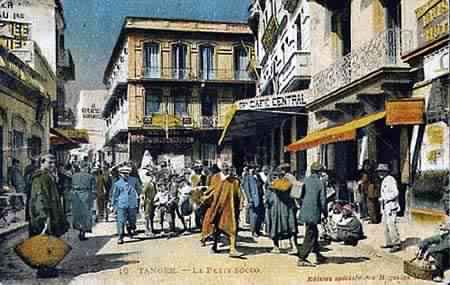
LE FASTE
Paul Bowles discovered it in 1931. At Gertrude Stein's instigation, he made the trip with his fellow student, the composer Aaron Copland. They were twenty years old at the time. In his autobiography, Memoirs of a Nomad, he gave his first impressions: " If I say that Tangier struck me as a dream city, the expression must be taken literally. Its topography was full of typically dreamlike scenes: covered, corridor-like streets with doors to rooms on either side, hidden terraces overlooking the sea, streets that were nothing but staircases, dark cul-de-sacs, little squares in steep places, so that they looked like the sets of a ballet drawn in defiance of the laws of perspective, with alleys leading off in all directions. (...) The city was clean and self-sufficient, a metropolis in miniature whose economic and social life was frozen in a perpetual status quo, maintained by the international administration and a fearsomely efficient police force."

From the 40s onwards, Tangier became a home base for him and his wife Jane. Having given up music, he went on to write dozens of short stories and novels, including Un thé au Sahara.
"Tangier gave Bowles everything - the stories of the medina and the kasbah, the little theater of the street, the romances, the swindles," explains Daniel Rondeau, writer-diplomat and author of Tangier et autres Marocs, " but Bowles gave it all back: he spread the city's imagination at a time when it was in decline."
Tangier was Bowles' home for fifty years. He died there at the age of 88.

UNCERTAIN PLEASURES
In its wake came the beatniks.
In the late 50s, Jack Kerouac, William Burrouhghs and Allen Ginsberg found paradise... and hell.
Kerouac was amazed by " gangs of Arab teenagers in blue jeans listening to rock'n'roll on a goddamn jukebox in a place full of pinball machines, just like in Albuquerque, New Mexico, or wherever ".
Burroughs wrote The Naked Feast there: " For a year, I hadn't bathed or changed my clothes. I no longer even undressed, except to stick the needle of a hypodermic syringe into my gray, fibrous flesh every hour, the wooden flesh of the final stage of the drug."

" Tangier is not a city, but a love. Like a human being, it's inside me. My writings owe it a great deal, especially my mind and heart. "
JACK KEROUAC, TANGER, 1957
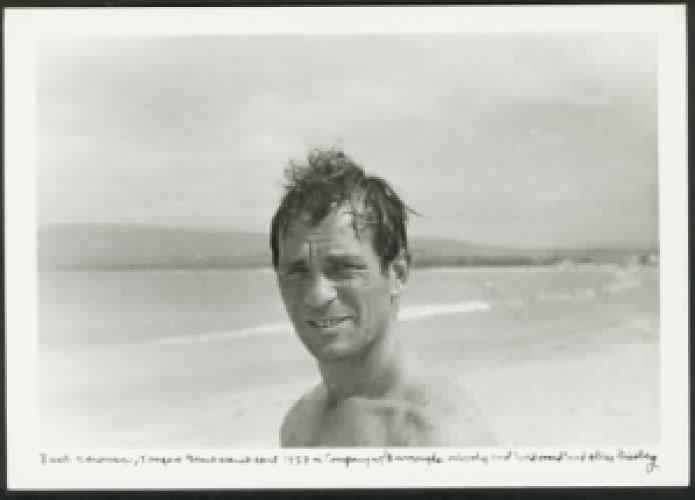
After some uncertain times of pleasure, false harmony and collective hallucinations, the beat generation writers returned to their demons, dreaming of America, breaking up again and abandoning Tangier.
In his diary, Allen Ginsberg described the unease he shared with his friends: " Yesterday at the Socco, sitting at the Fuentes café above the street full of Arab passers-by and shabbily dressed youths, while Peter had gone to spend half an hour at the brothel, I wept, thinking of the years of happiness we had spent together - knowing that when he left my sense of security and unity would leave me - my sense of determination in the search for love - for what to look for now? I'm thirty-five, half my life is behind me, no sure road opens before me, but several possible choices and none of them seem inevitable. "

THE DRAFT
Burroughs had this answer to the question " Why Tangier? " " For the boys and the hash! "
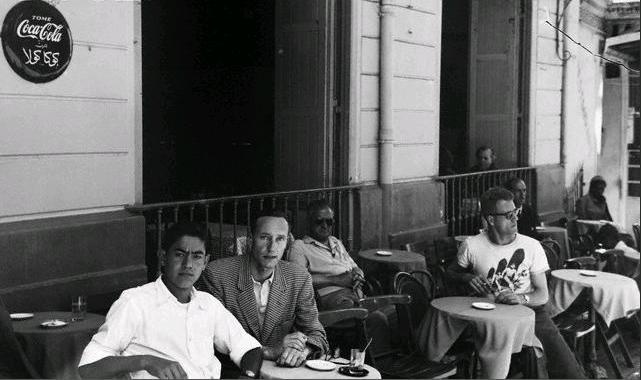
Indeed, it was this constant plenitude and ecstasy that troubled the artists. An impression of the sweet life, of easy sex, of moral idleness, that was nipping at everyone's heels.
Truman Capote noted this in his Impressions de voyage, in 1949: " Almost everything in Tangier is abnormal (...). There is an alarming number of travelers who have landed here for a brief vacation, then settled down, then let the years go by. For Tangier is a harbor, and one that encloses you; a place sheltered from time. The days glide by you, without you noticing them any more than the foam drops on a waterfall."
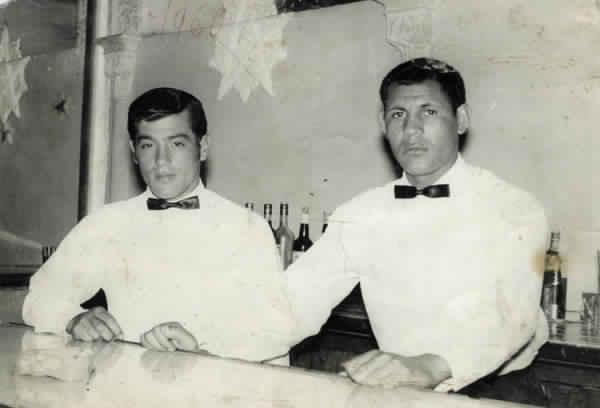
Joseph Kessel made the same observation in his novel Au Grand Socco, dedicated to Tangier: " The sun, the two seas, the color of the Arab costumes, the pretty alleys of the old city, the beauties of the Kasbah, the easygoing and amiable customs, all this makes certain foreigners believe that life here is detached from all worries, as if on a desert island. And people stay, stay here, without work, without purpose."
A place sheltered from the passage of time ", "easy-going and amiable customs". A place sheltered from time", " easy-going and amiable ": this is also part of the attraction of Tangier. Jane Bowles fell madly in love with a young peasant girl, Cherifa. Tennessee Williams, Truman Capote and, above all, Paul Bowles and Jean Genet, undoubtedly attracted by the bodies and love of boys, contributed to Tangier's interloping fate. Sailors, among other wanderers, too.
" I've traveled a lot, but my footsteps needed a place to settle down and write. I couldn't have wished for a better place than the Grand Socco to leave a part of myself. "
JOSEPH KESSEL, TANGER, 1952
Talking to Daniel Rondeau about his childhood memories, filmmaker Moumen Smihi describes a town that became a whorehouse in the 50s: " The Ciné-Americano was at the entrance to the biggest Mediterranean brothel, Trou Ben Charki. The whole block, a dozen or so alleyways, was entirely occupied by prostitutes. There were girls everywhere in the streets (...) After the stairs, once you'd passed under the Andalusian gate, you'd find yourself in a scene reminiscent of Satyricon. We hung around all day, in the stream of sailors from all over the world, from America, Italy, Yugoslavia, everywhere. Men and women kissed in the streets, drank, smoked kif in long pipes, ran around and flirted.(...) There was also a huge Jewish mama, Rica, who ran a Moorish bath, inhabited by Spanish transvestites, the mariquitas. They lived freely in the neighborhood, accustomed to their comings and goings. "

OISIVETY
Like the cinema, Tangier became a factory of dreams and fantasies.
Pépé le Moko could have strolled through the alleyways of the kasbah. Fréhel could have hummed her desperate tunes and Humphrey Bogart could have carried the bitterness of Rick Blaine.
In addition to merchants, brokers and bankers, and certainly because of the sailors, whores, hooligans and artists, the city attracted many great fortunes. They found here an oasis conducive to idleness and luxury, and settled in palaces such as the Minzah, La Villa de France or Le Continental, in magnificent villas on the old mountain or in the medina. Barbara Hutton, a wealthy American heiress, did just that, building a palace worthy of the Arabian Nights and widening the street to accommodate her Rolls Royce.
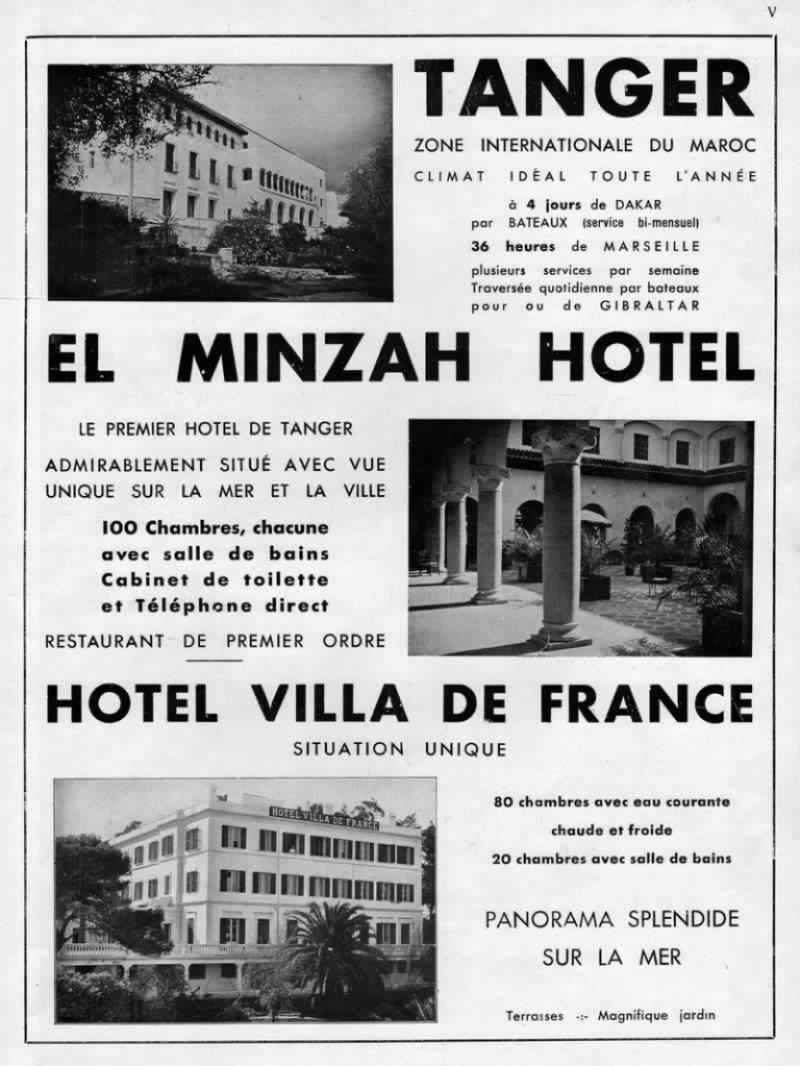
Lavish parties colonized Tangier, as did bars, cabarets, gambling dens and brothels. Trade, the underground economy, money flowing in champagne, legendary balls, femmes fatales, bodies offered up to desire, exoticism of the highest order: Tangier became mythical.
A myth based on a freedom as exciting as it is sordid.
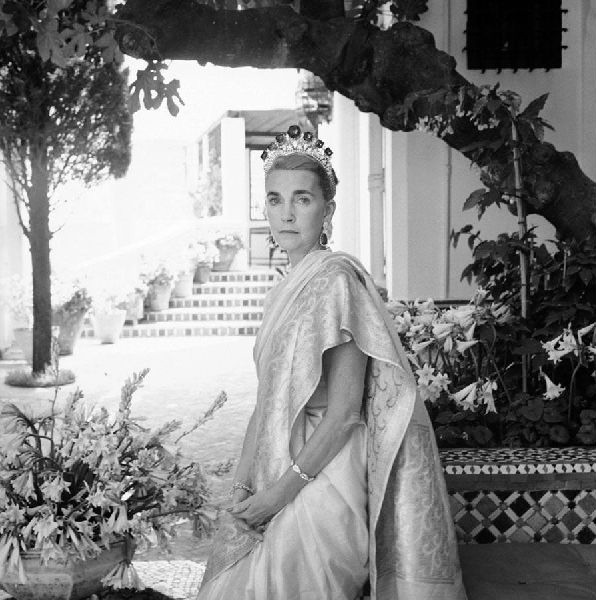
THE HASH
Libertine Tangier was bound to attract rockers and hippies. According to Rondeau, " Tangier was the sun capital of the rock generation, a stopover between Mexico and Nepal ".
Like Jimmy Hendrix, the Rolling Stones spent a long time there, as Keith Richards recounts in his autobiography, Life: " The decision was made on the spur of the moment: 'Let's take the Bentley and go to Morocco'.It was early March 1967. We had plenty of time and the best car in the world (...) In Tangier, we met up with Robert Fraser, William Burroughs, Brion Gysin, a friend of Burroughs' from London, and Bill Willis, a decorator specializing in exile palaces. (...) They called him "Ahmed with a hole in his head" because he prayed so often that he had a hole in the middle of his forehead. He was a good merchant. First a mint tea, then a pipe. He was into spirituality: as he passed you the pipe, he would tell you a thrilling adventure of the Prophet in the desert. A good ambassador for his religion, always cheerful, he could also roll you in flour without hesitation. He was missing some teeth, but his smile was great. Once he started smiling, it never stopped. And he was always looking at you. And his hash was exceptional; you could see rivers of milk and honey flowing. After a few pipes, it was almost as if you'd taken the acid. Ahmed was always coming and going, bringing pastries and sweets. It was really hard to leave. You'd say to yourself, "Come on, one more quick blowjob and then we'll do something else", but you'd end up never getting off the ground. You could spend your days, your nights, even your life there. And in the background, the constant crackle of Radio Cairo .
Roland Barthes, who visited several times in 1969, ironized this cool colonization in Incidents: " At Le Petit Socco, in July, the terrace is full of people. A group of hippies, including a couple, come to sit down; the husband is a fat blond naked man in blue-collar overalls, the wife is in a long Wagnerian nightdress; she's holding a limp little white girl by the hand; she makes her shit on the sidewalk, between the legs of her companions, who aren't bothered.

THE DECLINE
It was in these wisps of artificial paradise that Tangier saw the last glimmers of its splendor fade.
However, in 1947, Sultan Mohamed V made a speech there that was fundamental to the kingdom's independence. Independence was declared in 1956. That year, Tangier lost its international status and became a Moroccan city once again.
In 1961, Hassan II acceded to the throne. He had little love for this rebellious, sulphurous city. The king, scornful of the pearl of the Strait, let it wither away. The stateless city gradually lost its lustre, but was unable to hold on to the kingdom. It remained proud of its extraordinary history, painstakingly patching up the wreckage of its decline.
One cinema after another closed. The superb Teatro Cervantes was condemned to oblivion. The Librairie des colonnes, a literary beacon that had seen some of the world's greatest writers pass through its doors, cowered. Many of the city's hotels, bars and prestigious buildings were nothing more than decaying, ghostly relics of a bygone era, adorning a languid city.

THE GHOSTS
As the foreign presence diminished, the Moroccans were able to reclaim their city.
And the myth of Tangier was revealed.
The fantasy of a dream city, an Orientalist dream in which Arabs were merely extras. As writer Mohamed Choukri lamented: " When I arrived, there were two Tangiers: the colonialist, international Tangier, and the Arab Tangier, made up of misery and ignorance. (...) Of all the people who have spoken or written about the city, many have only seen it through the lens of their own fantasies. All those for whom Tangier was no more than a brothel, a beautiful beach or a rest home."

" Tangier was a party for the half-soldiers of the modern world. They descended to the Soccos for a love affair, for grief, to be forgotten, forgiven or consoled, for pleasure, for light, for nothing, for vice or necessity. "
DANIEL RONDEAU, TANGER, 1985
THE RENEWAL
Femme fatale, Tangier had become a sleeping beauty.
Unlike his father, King Mohamed VI understood the opportunity represented by the city and its history. The monarch brought a dazzling wave of tourism and economic development to the region, accompanied by unbridled urbanization.
Fleeing the ostentatious Marrakesh, a growing number of celebrities and artists have made Tangier their resort. In their wake, tourists became infatuated and, like Bowles, stayed on.
For the beauty was only dormant. And her treasures barely buried.
Little by little, Tangier is reconnecting with its past to better govern its present and shape its future.
Anthropologist Michel Peraldi is convinced of the city's destiny. " The transnational is that which exceeds the national, overflows it ", he asserts, " Part of Tangier today lives in a transnational Euro-Mediterranean space-time ". An opinion confirmed by Tangier writer Lofti Akalay, for whom "Tangier is Morocco's waiting room".
In 1951, Rodolphe Maté directed The Prince who was a thief, starring Tony Curtis. Tangier is set in a Hollywood setting, worthy of the Arabian Nights, to match the fantasies it generated.

Fifty years later, in Loin, André Téchiné sketches a modern-day city: "As a counterweight to this mythical Tangier, I wanted to film a resolutely contemporary Tangier. I was more interested in the Tangier of today's streets. For him, " Tangier was a condensation point where there was the possibility of a strange crossroads between people from the North attracted by the South and people from the South attracted by the North. Moreover, Tangier is far away but close at the same time: it's in Africa, but only about twenty kilometers from Europe. There was the idea of the edge, of the border, of what is farthest away in the near, or closest in the far. And Tangier is criss-crossed by several languages: English, Arabic, French, Spanish and even African... "
In Arabic, Tangier is called Tanjah: " The land brought back "...

The myth of Tangier (Le Monde - 2009)
On the Beat Generation in Tangier

In the footsteps of Delacroix in Tangier


